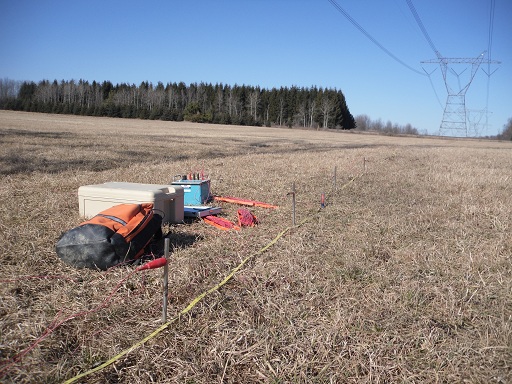
Photo Credit: Nathan Shoemaker
Shown here is a field soil resistivity test. The resistance of the soil is measured by sending a current across the two outer probes and the voltage potential is measured across the inner two probes. From Ohm’s law the resistance of the soil can be found. The measured soil resistivity is the average resistivity of the soil to a depth down a distance as far as the probes are spaced apart. Soil resistivity can be used for different things; since different geo-materials have different inherent resistances, a change in soil resistivity can indicate a change in the soil type(or rock). Resistivity is also very sensitive to soil moisture such that the depth to groundwater can also be interpreted from soil resistivity data. The testing shown above is using the value of soil resistance directly to size the metal grounding rod for a high-voltage transmission line. The grounding rod is sized such that the tower can dissipate a lightning strike.